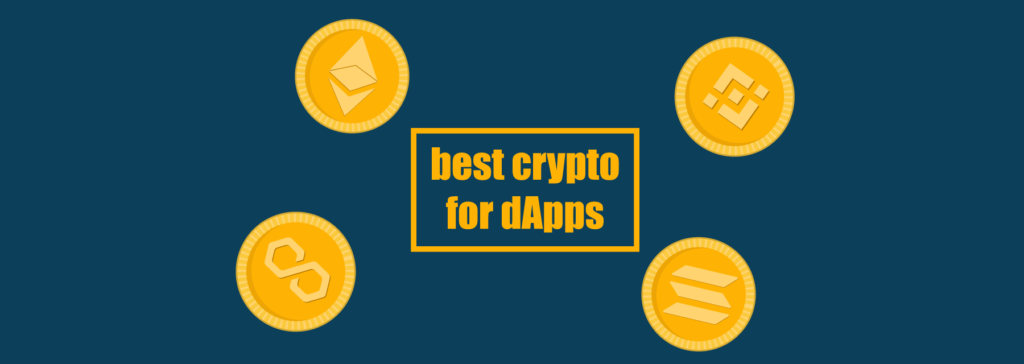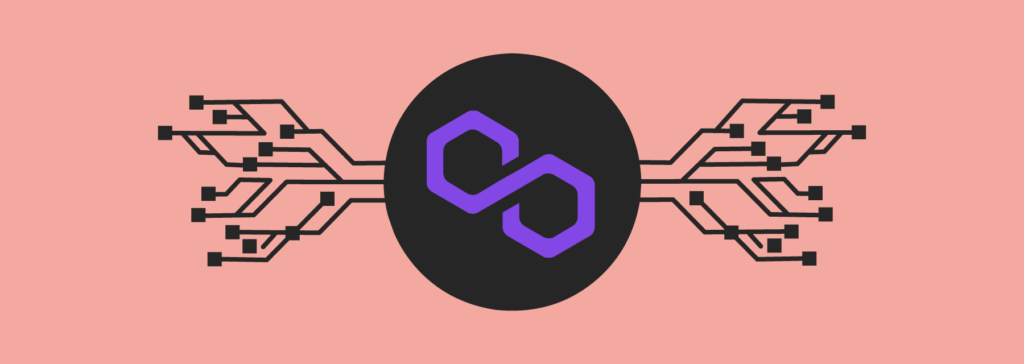What’s the Best Cryptocurrency for dApps?

dApps are said to be the metric by which the success of the decentralized ecosystem will be judged, and by association the platforms on which those dApps operate.
Each of these protocols has its own native token, all of which have different uses.
Given the plethora of decentralized protocols and dApps now out there vying for mainstream market penetration, which of these protocol tokens is the most likely to be the one that finally breaks the glass ceiling and has everyone in the non-crypto world talking about it?
This piece analyzes five of the leading dApp tokens in the space and asks which, if any, is the best cryptocurrency for dApps?
Our Criteria

When we consider which cryptocurrency is best for dApps, we are naturally bound by a very important restraint – the platform being used.
For example, you can’t use Binance’s BNB token on an Ethereum dApp just as you can’t use ETH on a Binance Smart Chain dApp.
Blockchain platforms do offer interoperability of a sort, but this usually involves users having to ‘wrap’ their chosen coin in a layer compatible with the destination blockchain, much like putting your feet in ice skates in order to operate on the different terrain.
To a certain extent then we are hamstrung in our evaluation criteria, but this doesn’t stop us being able to analyze the cryptocurrencies that dApp users will be sending and receiving as they go about their decentralized business.
In doing this we will consider extrinsic factors such as the market penetration of the protocol itself and the versatility of the coin within it alongside intrinsic factors like speed and transaction cost when making our decision.
ETH

The Ethereum platform hosts more dApps in the top 20 rankings by volume and balance than any other in the entire cryptocurrency space, which will not be a surprise to anyone who knows anything about crypto.
It has had first mover advantage in the smart contract world, it was the fulcrum of the entire ICO movement in 2018, it was the original home of Defi…it is, in the words of a certain fictional news host, kind of a big deal.
It is also still completely decentralized, something some of its newer and more nimble competitors cannot boast, which, after all, is the foundation stone of this entire movement.
However, as a cryptocurrency, ETH is horrible to use.
It is slow and expensive…very expensive. As in ‘forget this, I’m off’ expensive.
And that’s even if the transaction goes through; failed transactions are common, and you still have to pay the gas fee.
No amount of utility and diversity can make up for a currency that is just too damned expensive to use.
Ethereum is in the process of upgrading to a proof-of-stake consensus algorithm and a series of improvements that will, in theory, reduce the cost and increase the speed of ETH transactions dramatically.
This can’t come soon enough, because with other blockchains making waves in the defi and gaming sectors, even if they aren’t as decentralized, ETH is suddenly becoming the least attractive cryptocurrency to use within a dApp.
BNB

BNB has been around ever since crypto oligarch Binance first opened its doors in September 2017, but it is only with the creation of Binance’s second blockchain, Binance Smart Chain (BSC), that it has come into its own.
BNB is the native token of the chain, running on both the older BEP (Binance Chain) and newer BEP-20 (Binance Smart Chain) blockchains.
BNB powers both decentralized trading on the Binance Dex exchange and centralized trading on the regular Binance exchange, while holders can also put their BNB tokens towards Binance’s Launchpad scheme for new projects.
The cost of sending BNB is lowest on BSC, with transaction times also very quick.
This is because BSC is semi-centralized, an example of the new ‘CeDeFi’ movement which aims to balance decentralization with speed and cost, something that not everyone is over the moon about.
Unfortunately for BNB, this is where the good news ends.
While the principal exchange on the BSC network, PancakeSwap, can boast 9x more users in the past month than Uniswap, Ethereum’s number one exchange by volume, the native token for that exchange is CAKE, not BNB.
This is the same with almost every dApp in the Binance Smart Chain ecosystem – they all have their own tokens, with BNB only being used when users want to convert to/from BNB or send that BNB elsewhere.
Add to this the fact that Binance DEX loiters in the 40s when it comes to exchange rankings and you can see why, despite its speed and cost advantages, hardly anybody is using BNB for more than the most perfunctory services in the BSC ecosystem.
SOL

Solana has taken the crypto world by storm in 2021.
Another example of the CeDeFi movement, the blockchain, which claims to be the fastest in the world as well as having the fastest growing DeFi ecosystem, has indeed seen huge growth in both scope and adoption this year, with several of its projects in all sectors creeping into the top 10 according to monthly users and volume.
The SOL token is a breeze to use, arriving at its destination before the sender has even drawn breath, allowing all transactions, from payments to NFT minting, to become near instant.
Solana claims to be decentralized, but not everyone is convinced, with some raising doubts due to its reliance on the Solana Foundation which is currently the only entity developing core nodes on the blockchain.
This was evidenced when Solana effectively shut down for almost a full day in September 2021, with the team effectively having to push the restart button on the blockchain.
Given that it is a relatively new project, Solana naturally has a low market penetration, but its name is starting to come up in dApp rankings across all sectors, including some dApps appearing at the top of the ‘user numbers’ charts, an impressive feat for a new blockchain.
Clearly, then, Solana is going in the right direction.
DOT

Polkadot has become one of the most talked about blockchains in the entire space over the past year, and it’s not hard to see why.
Its combination of speed and scaling, not to mention its clever use of parachain auctions to feed excitement and demand, has made it a very sought after blockchain to be a part of.
Polkadot says that it will start off operating at 1,000 transactions per second, which is just 1/50th of Solana, although with the project ramping up for launch right around now it will very likely increase this speed over time.
Its parachain sharding system allows the blockchain to scale theoretically infinitely, and once live it will be completely decentralized.
Polkadot says that its DOT token, whose transaction fees are notably more expensive than its faster rivals although still a tiny fraction of Ethereum’s, will have three key services – governance, staking, and bonding.
Seeing as dApps running on the Polkadot network will use their own tokens, it doesn’t seem that the DOT token will be used for any actual dApps on its platform, although it is the medium by which parachain votes are cast, giving it a unique usage there.
Being the newest cryptocurrency in our list and having not yet gone fully live, it may be harsh to judge DOT too much before it has really had a chance to do a few laps of the blockchain circuit.
MATIC

The MATIC token is the native coin on the Polygon blockchain, which was itself formerly called Matic.
Founded in 2017 out of frustration with Ethereum’s high fees and slow transactions (plus ça change), it is technically a Layer 2 solution for Ethereum, but is seen by many (and indeed largely operates) as its own blockchain, which is why we can include it in this list.
Polygon took a while to get its platform off the ground, but the last 18 months have seen it ramp up its development and enter the dApp market in a way reminiscent of a ninja than a SWAT team; Polygon projects are suddenly dotted all over the dApp rankings without anyone really making a song and dance about it, a sure sign that something is going very right indeed over at Polygon towers.
Part of this success is down to its ability to automatically scale any Ethereum dApp massively, with transaction speed said to be equal to that of Solana, although fees are higher (although still fractions of a penny).
The MATIC, is naturally the lubricant that greases the wheels of the Polygon machine.
It is used in all transactions on the network, from games to DeFi applications – whatever use the Polygon network is put to, the MATIC token will be needed to make it work, with its speed working in its favour in terms of versatility.
MATIC gets a boost because of Ethereum’s stranglehold on the dApp world which gives it an unfair leg up against blockchains starting from scratch, although it is important to note that it too is semi-decentralized.
And the Winner Is…

Having analyzed the top dApp blockchains and their associated coins, is there a clear winner?
In terms of utility there is no match for ETH, but even if we could forgive its slow speed we can’t forgive its transaction fees, which more than outweigh its market penetration and utility.
The other contenders are all very similar – earlyish projects with lots in the trunk but not many places to use it.
There is however one that stands above these other contenders, a token that is already starting to blend use cases, speed and cost despite being the youngest of the lot.
For our money, Solana is the best cryptocurrency for dApps for the foreseeable future.
The CeDeFi movement has huge benefits over full decentralization (Solana has ambitions to go fully decentralized anyway), and the fact that it has managed to achieve a great amount of market penetration at such an early stage is very impressive.
Technically speaking it has the chops to be one of the fastest and cheapest blockchains out there for some time to come – as long the September 2021 breakdown was a one-off.
Speed, convenience, and ease of use have overtaken decentralization in the importance stakes for the blockchain movement, and we’re confident that over time Solana will come to be one of the dominant dApp protocols in the space as CeDeFi continues to evolve.
As a result, the SOL token will see utility rapidly expanding as Solana’s dominance increases.
